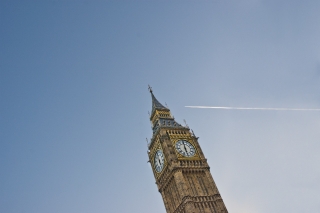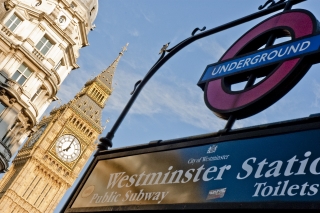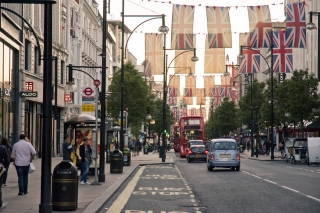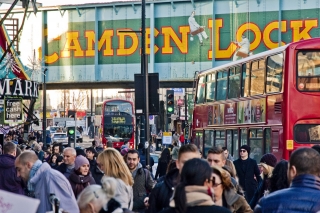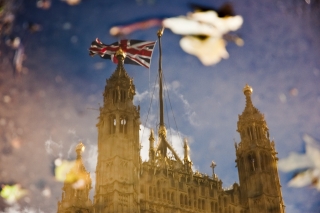Before moving to London, I struggled with this city on my occasional visits, as I could not gain a sensible perspective on its squares and streets. In my eyes, this city was looming around the river without any clear centers or avenues of approach: Piccadilly Circus appeared to me as the most prominent meeting point, Trafalgar Square was — as I read — the reference point for all road distances to and from London (more precisely, the measures were taken from a point just behind the memorial of Charles I), St. Paul’s stood out but was not central, and Bank at the former location of the Roman forum had the oldest claim but felt only like a local center. There were a couple of other important places acting as traffic joints, like Marble Arch, Hyde Park Corner, or Oxford Circus, along with the bigger train stations at Paddington or Victoria, but none of them seemed more eminent than the other. Likewise, there were a couple axes in London, such as the one starting with serene Holland Park Avenue, followed by park-side Bayswater Road, which becomes unavoidable Oxford Street to lead via New Oxford Street into Holborn, which is continued as Newgate Street before reaching as Cheapside its endpoint Bank. Those were seven streets instead of one, which altogether did not form a well-defined axis but were my first attempts to create an inner map of the city. And they were all distinct streets that evolved independently resulting in their own charms and scares. London felt as this must read — confusingly exuberant and overloaded.
Back then I took some pictures of London which are more or less randomly following touristy trails. Looking at these pictures to remember my first impressions I stumbled across some I still enjoy. I want to post these pictures before shooting London with a more coherent perspective which I feel is evolving now. Still, London is to me a labyrinth grown as an unplanned agglomeration resulting in a coincidence sheltering some 10 million people. Like my list of streets above, forming one possible avenue through London, the city is the result of a continuous series of extensions and changes that were appended in an ad-hoc manner. As such, London is the complete opposite of Haussmann’s Paris with its grand avenues staging its architecture in the space to unfold.
The most famous moment when this could have changed occurred in the aftermath of the great fire in 1666: Most of the City of London was destroyed and Christopher Wren, who rebuilt St. Paul’s next to 51 other churches, presented one of the plans for rebuilding London. His plan followed the Parisian example and allowed for wide, long boulevards to structure the city, stage its architecture, and provide open spaces preventing another fire to spread. Neither this nor another plan was executed and London was rebuilt without any overarching design. Thus in London, it is perfectly possible to stand next to a grand building without realizing, as London is still cramped and packed with extensions and additions that were never integrated into some coherent design following the immediate needs. With a chaotic soul and no prescribed form, London is changing at a quicker pace than most European cities of similar scale. The resulting urban accidents surprise the inclined stroller with glimpses of beauty that appear as suddenly as they disappear. This has made London a place of serendipity — and some of these moments of surprise turned into the pictures below.
